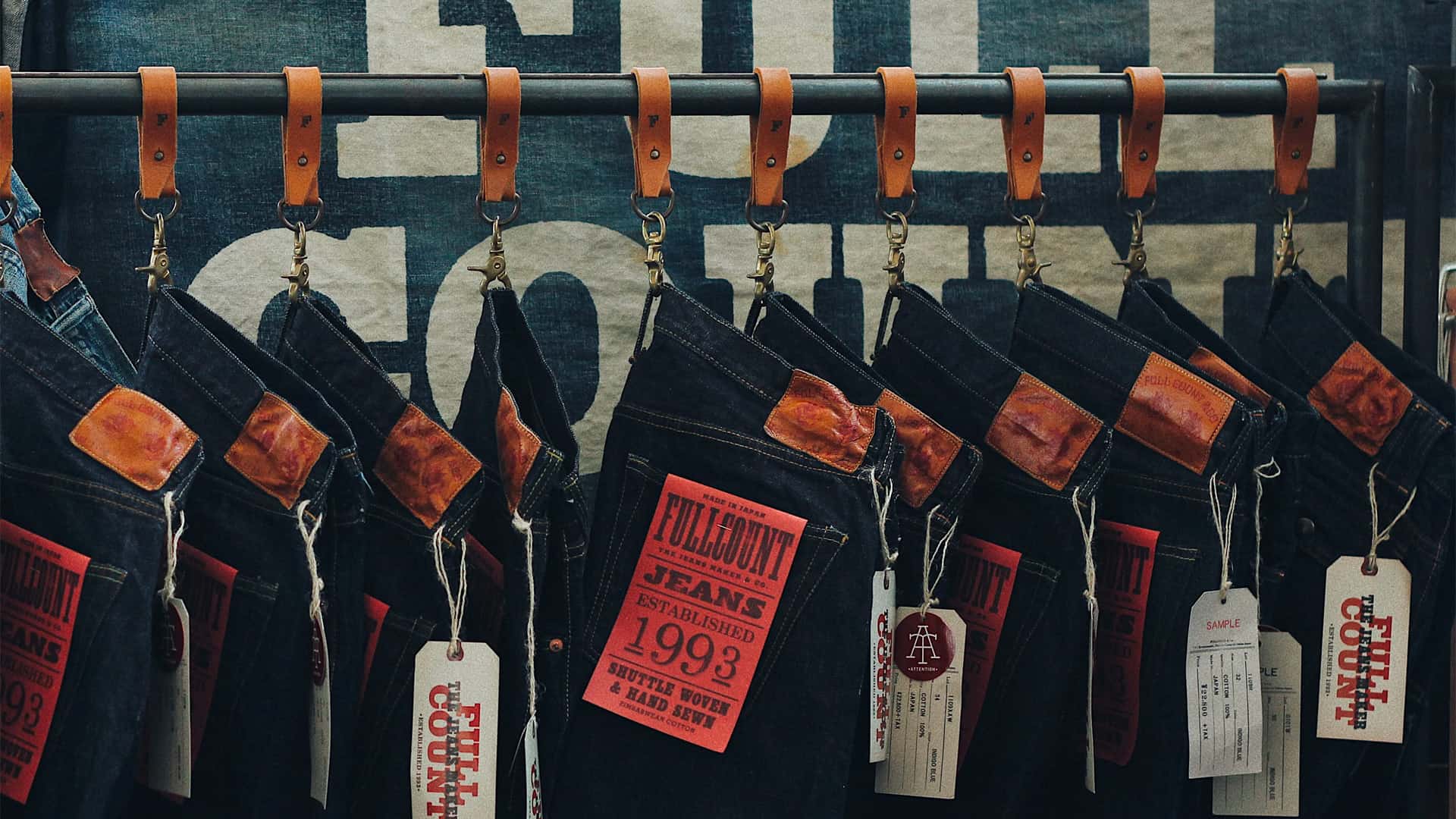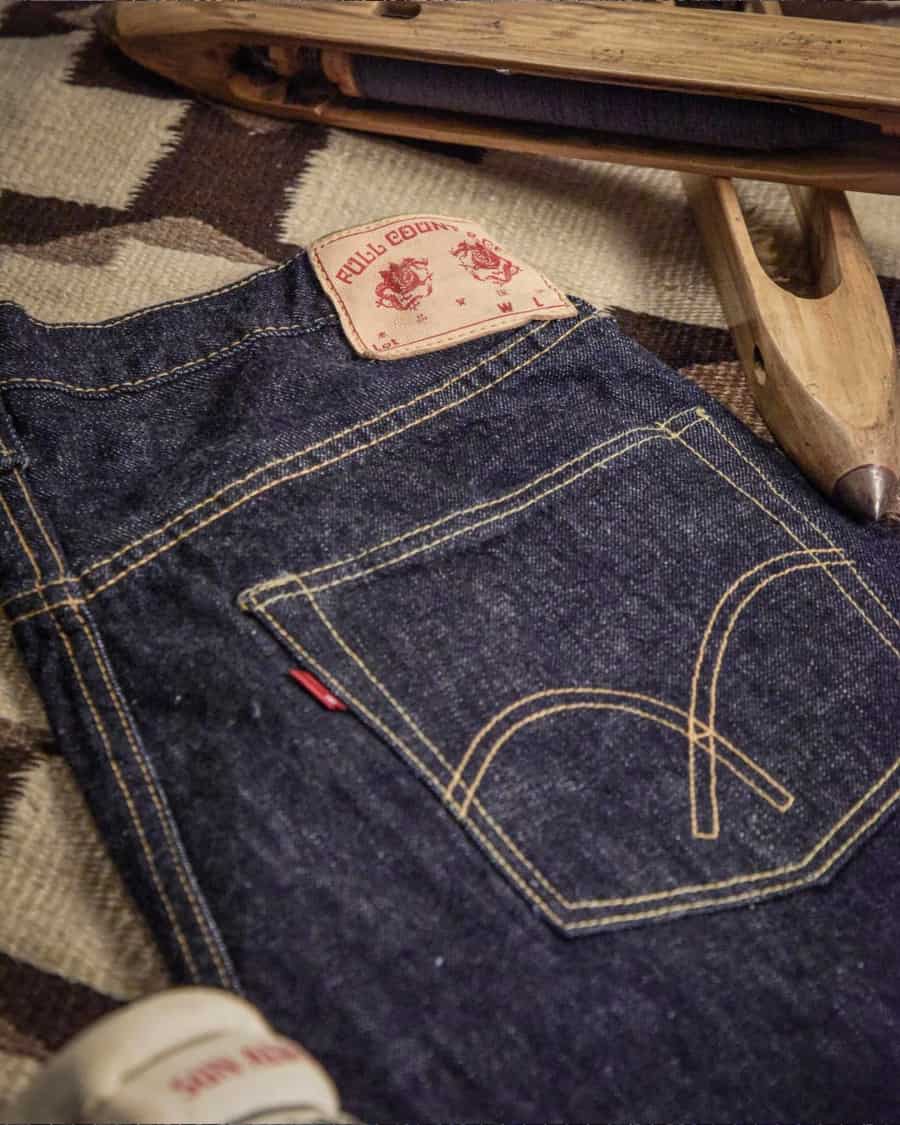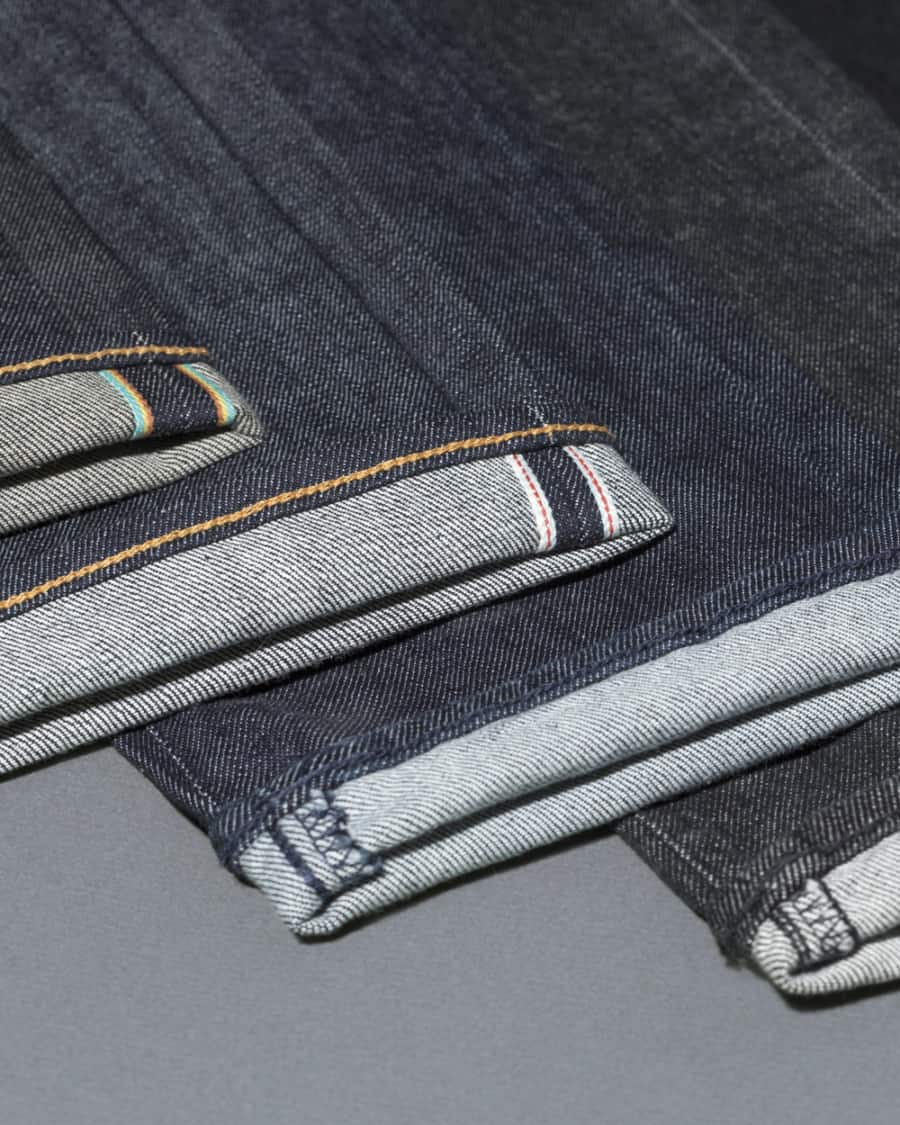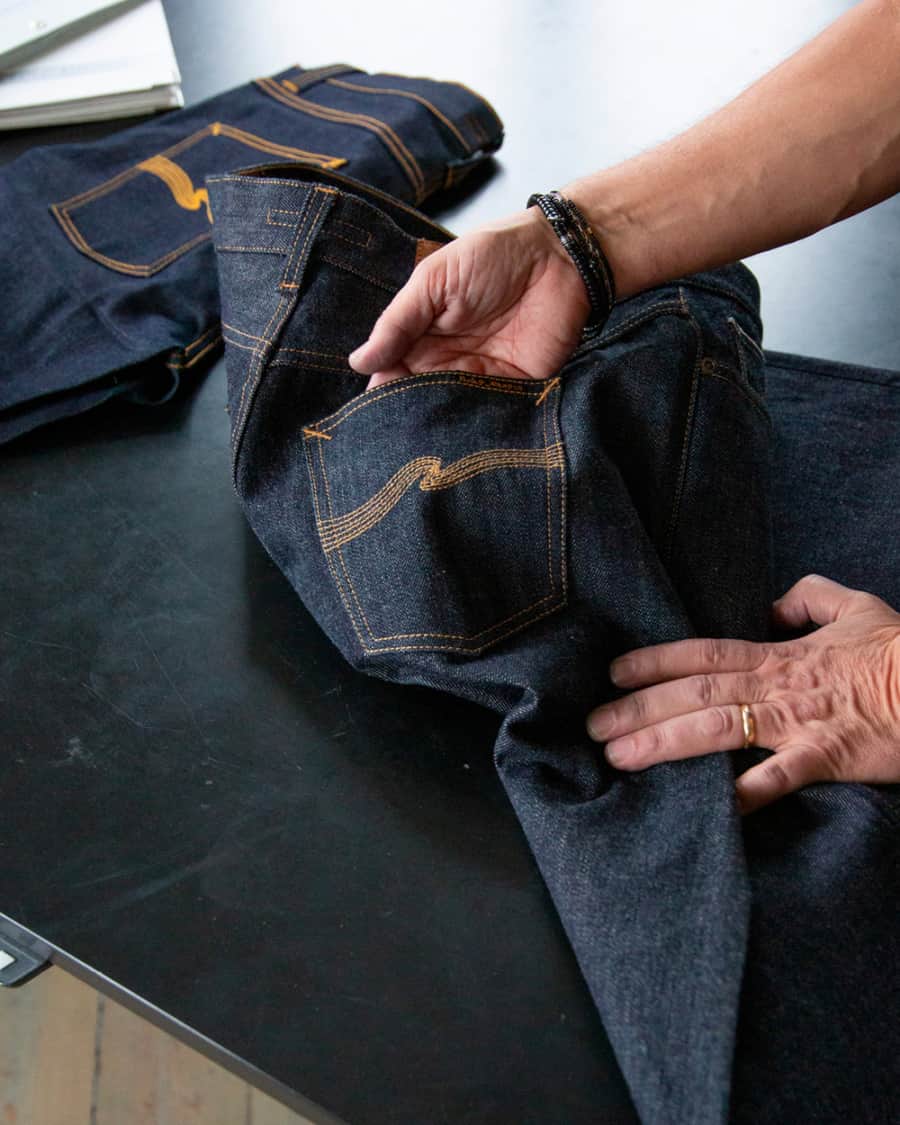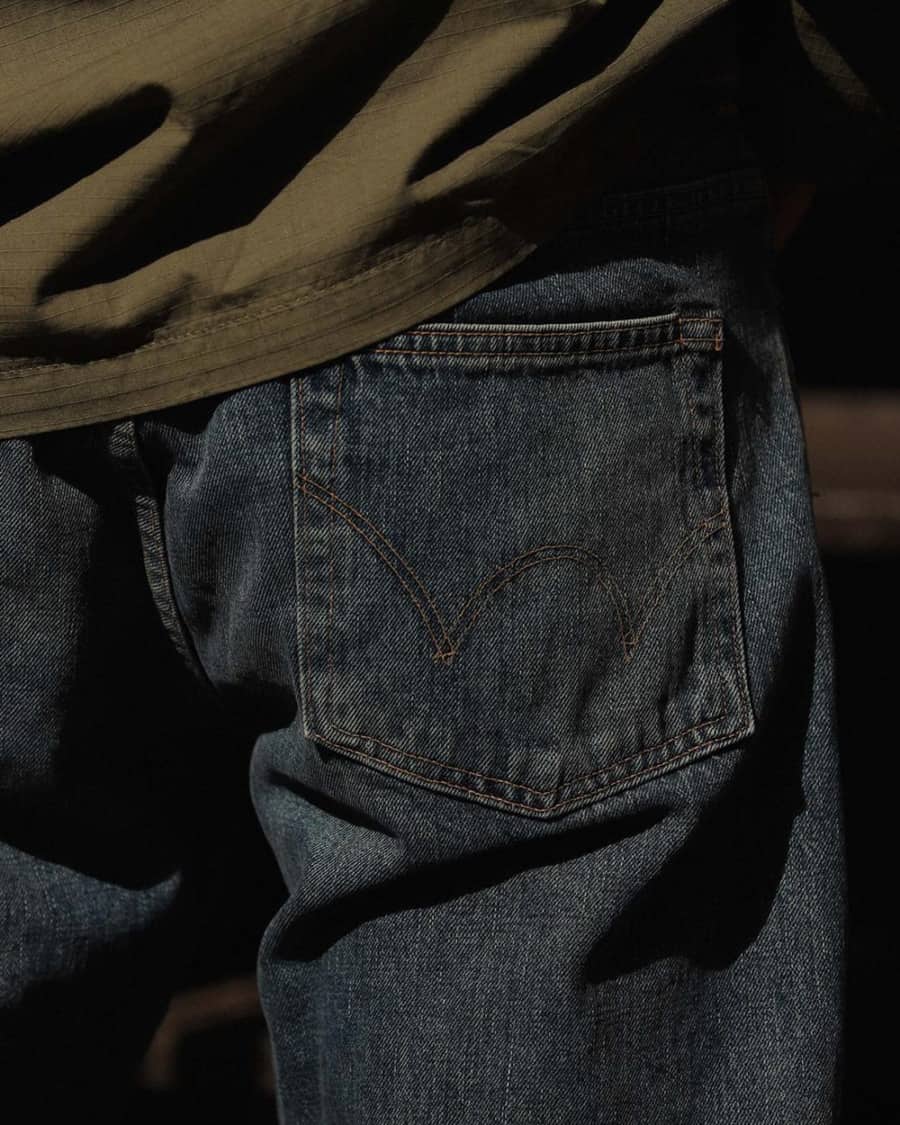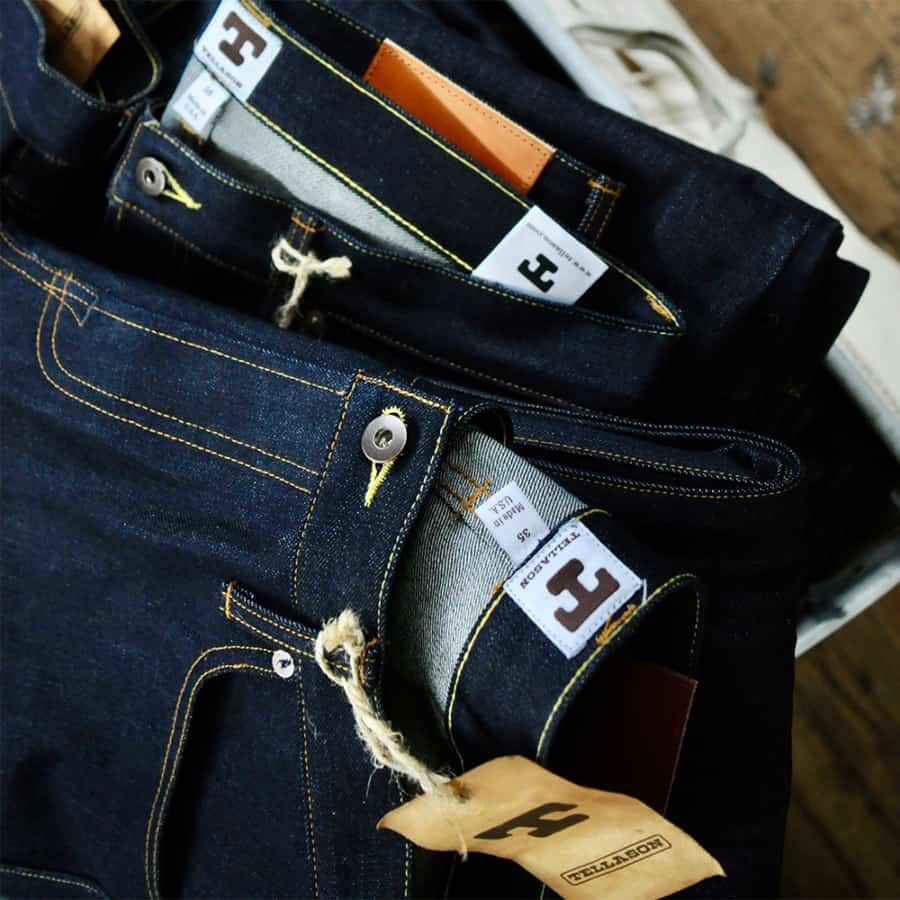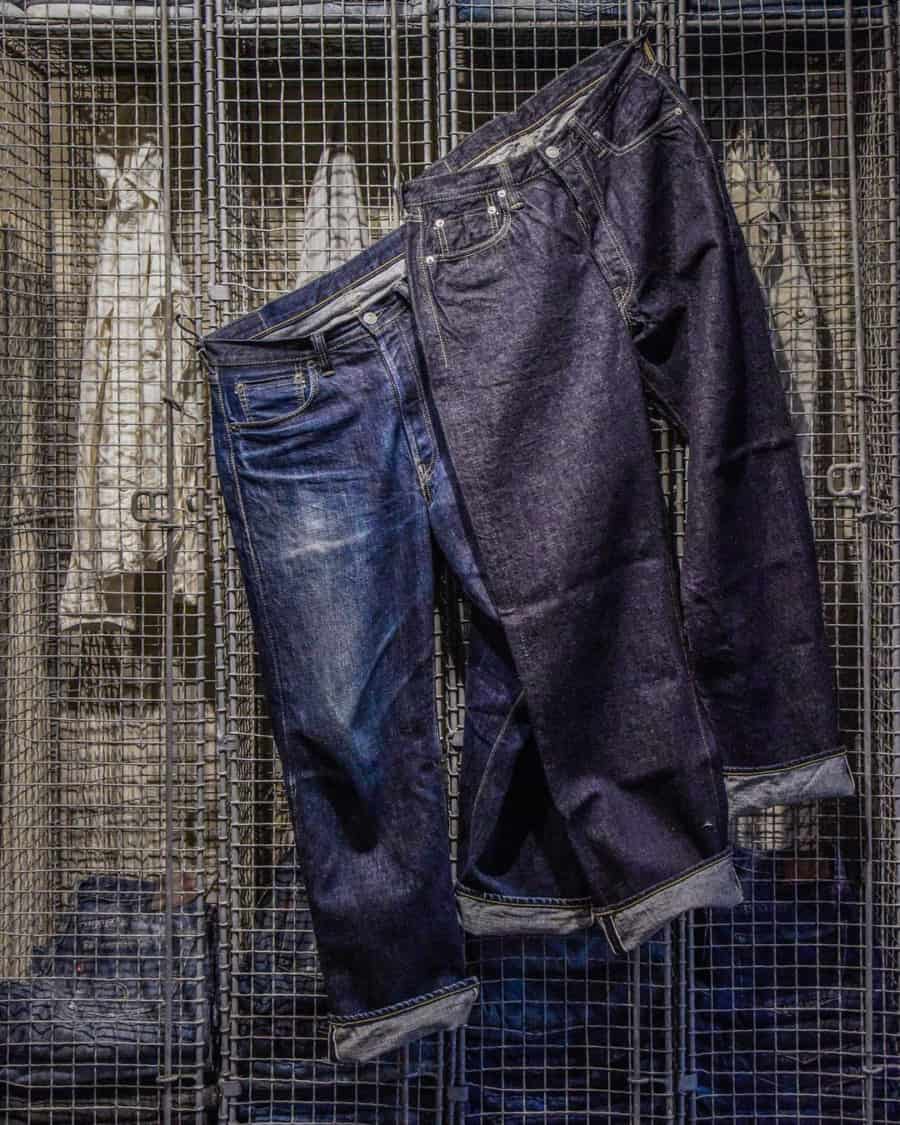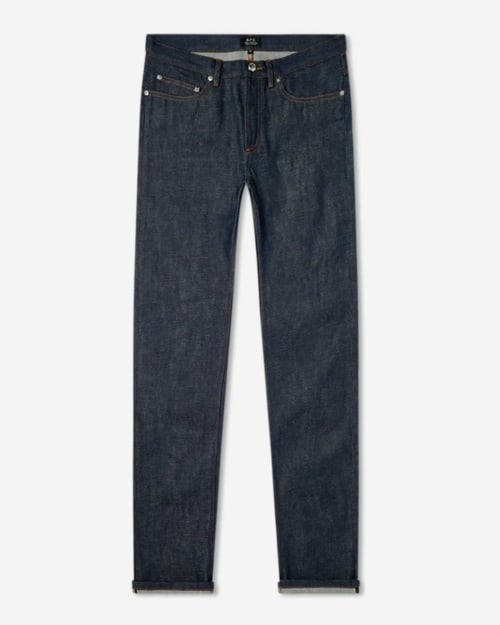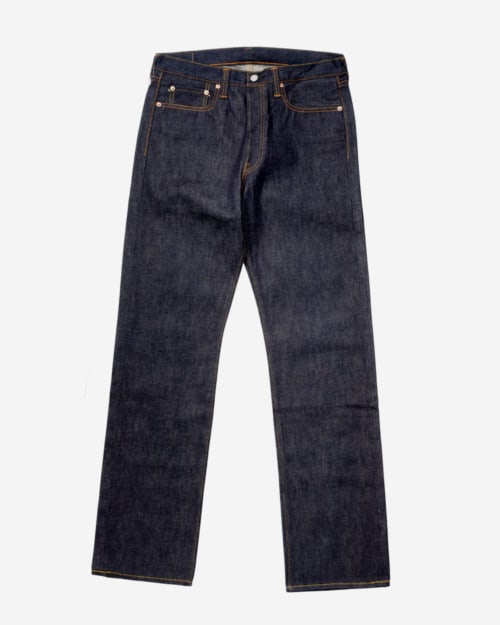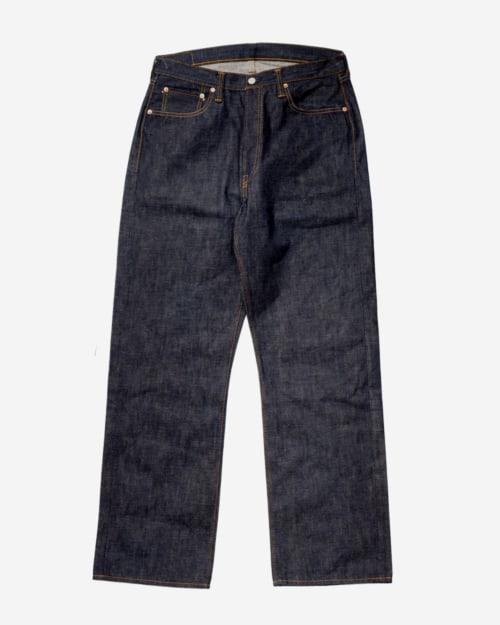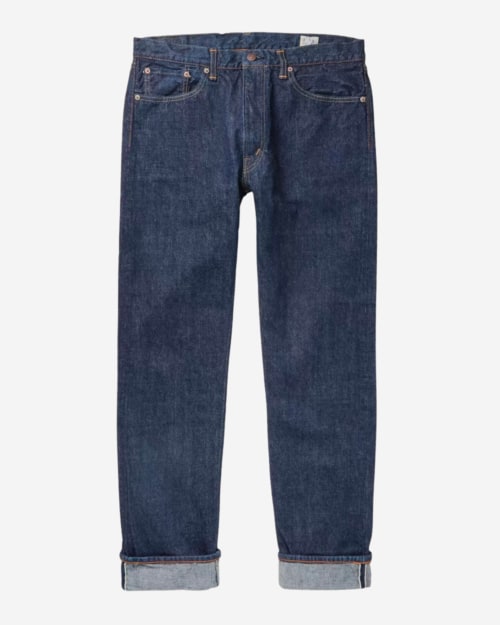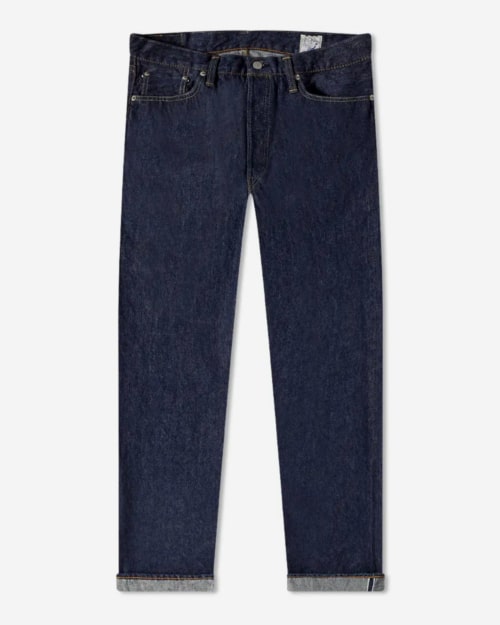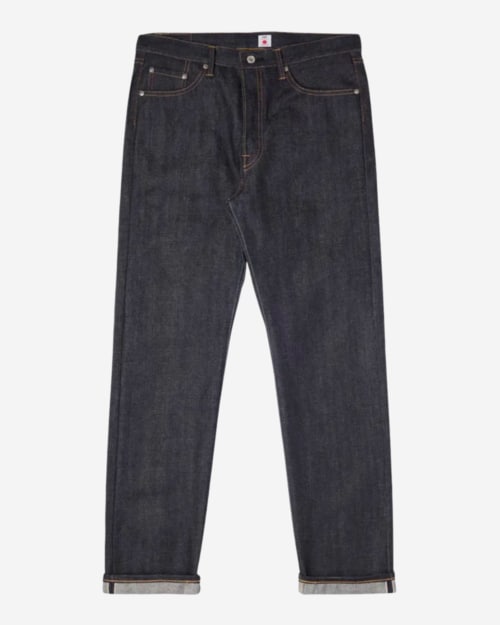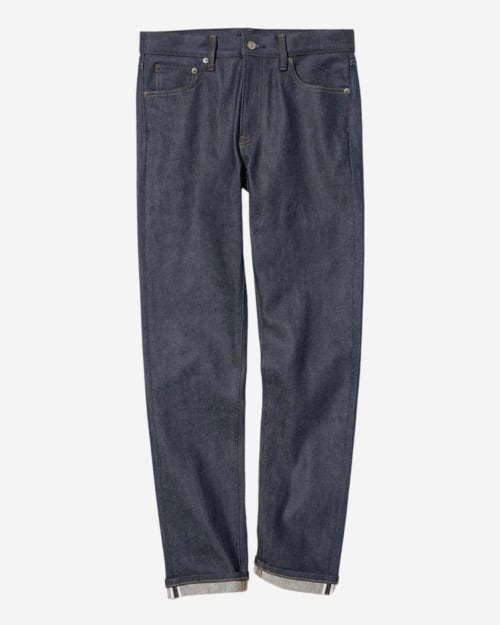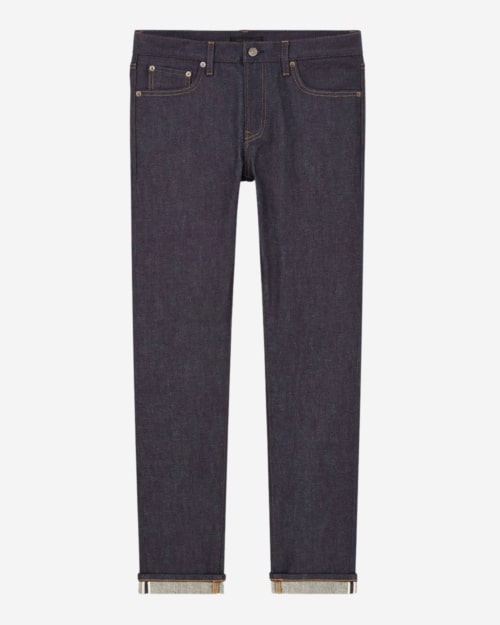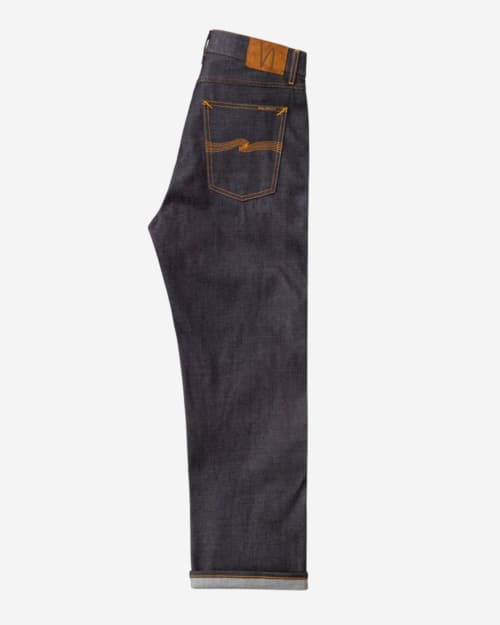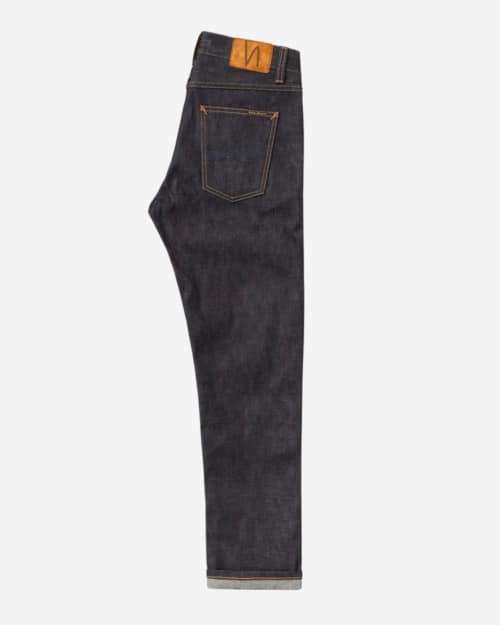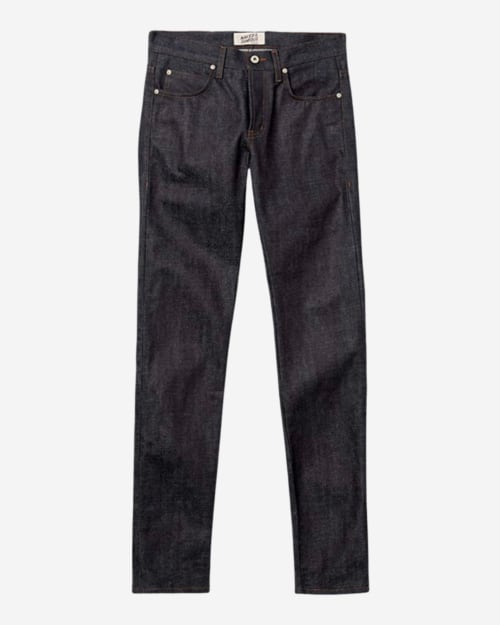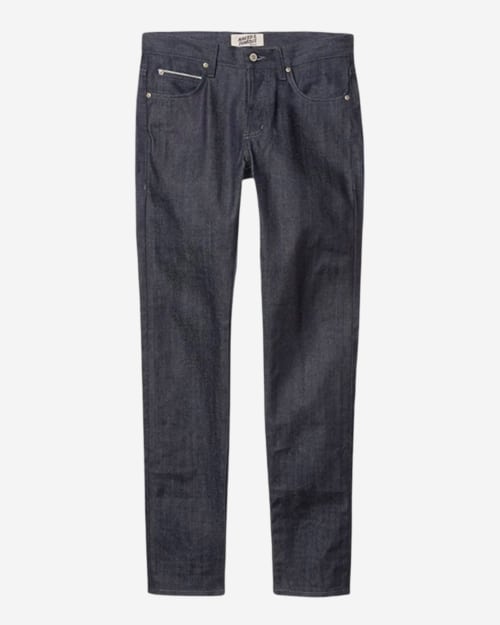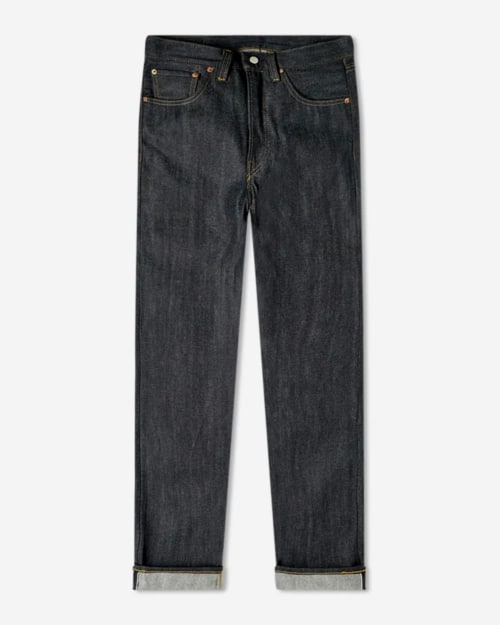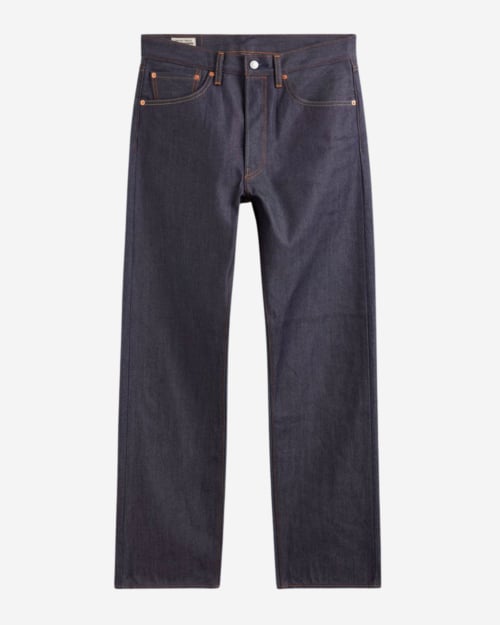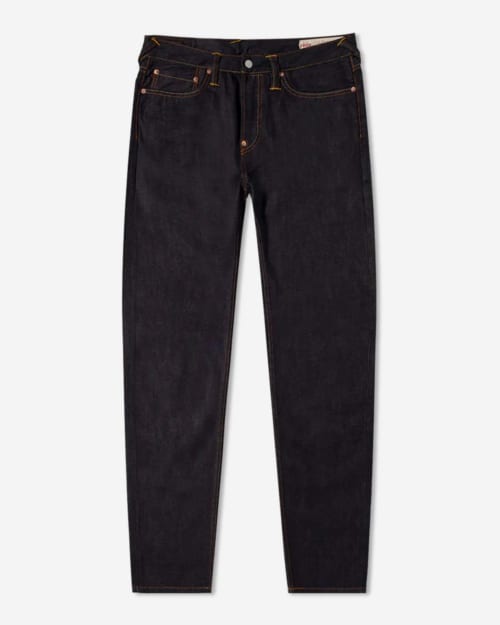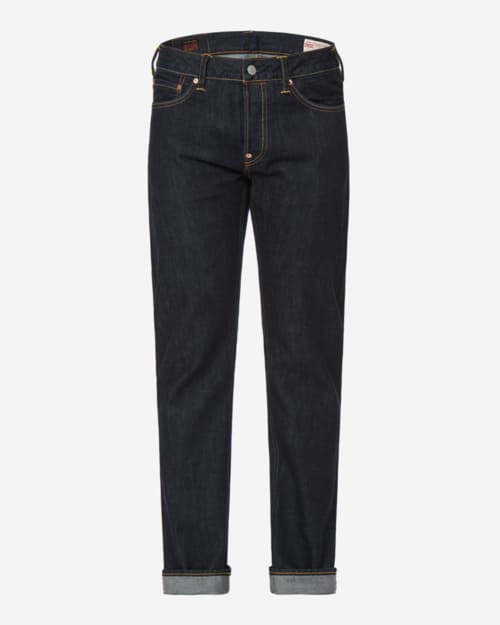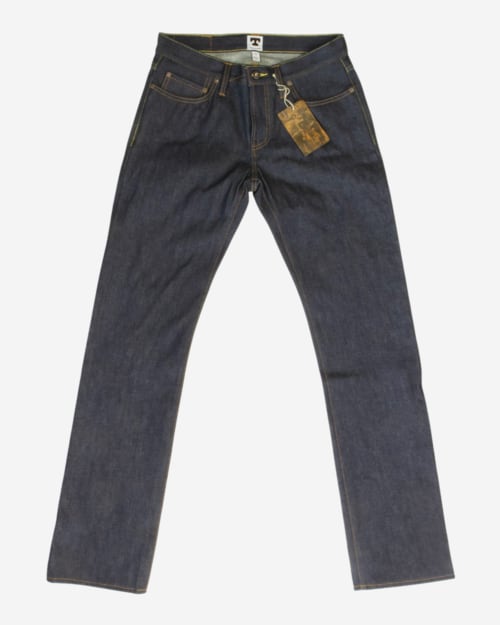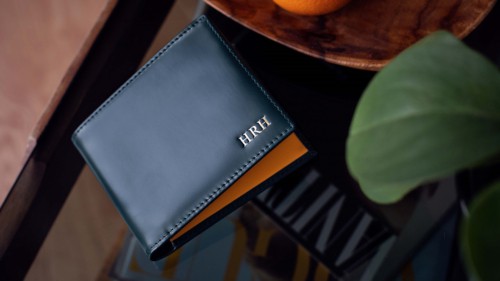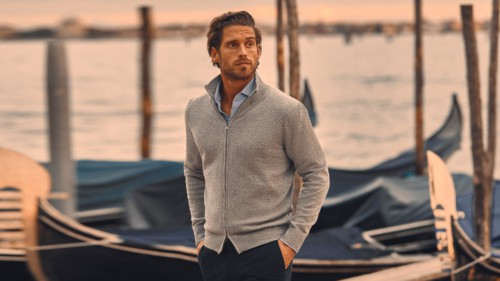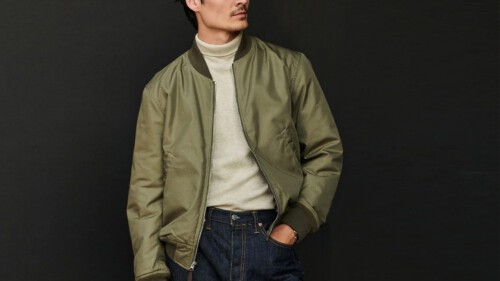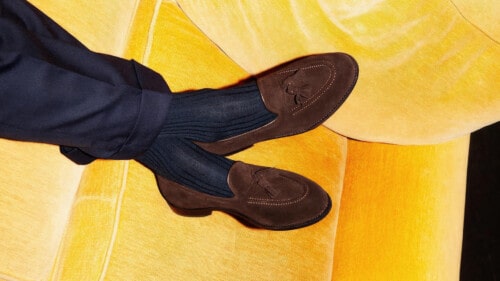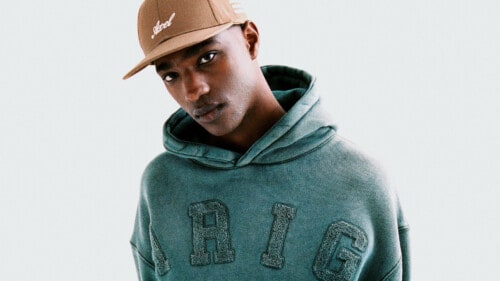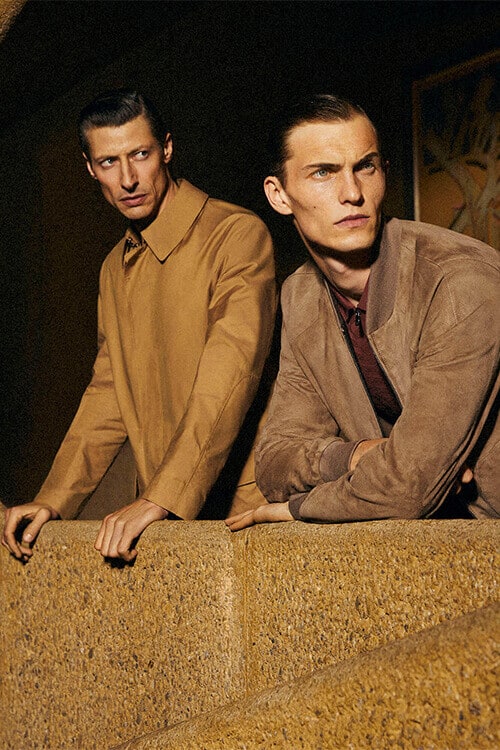The Ultimate Guide To Men’s Raw Selvedge Denim Jeans
The ins and outs of denim’s top tier, covering everything from weight and washing to fit and fabric.
It’s nice to enjoy the finer things in life. An expensive bottle of wine, a five-star hotel, a Michelin-star dinner, the smooth leather upholstery in a high-end sports car. Or how about – and stay with us here – an extraordinarily heavy pair of Japanese jeans that are as stiff as a board and take several painful weeks to break in?
It might not sound particularly luxurious, but when it comes to jeans, raw selvedge denim is the crème de la crème, and if you can get past the initial discomfort, you’ll understand why.
This stuff is the real deal. It moulds to your body over time, develops pleasing fades and whiskering unique to the wearer and their lifestyle, and gets better and better with every wear. There’s a reason there’s an entire subgenre of menswear devoted to it – and once you cross that unwashed-indigo threshold, there’s no going back.
Thinking of making your first foray into the world of raw denim? Perhaps you’re confused by the lingo or have heard about the complexities of the sizing. In this guide, we’ll explore the ins and outs of denim’s top tier, covering everything from weight and washing to fit and fabric.
Raw denim vs. selvedge denim
To the uninitiated, the terms ‘raw’ and ‘selvedge’ may seem to be interchangeable. In reality, these are two separate things entirely, and it’s important to establish the difference before going any further.
The ‘raw’ part refers to the colouring and finish of the denim, while the ‘selvedge’ part refers to the type of material used. Not all raw denim is selvedge, and not all selvedge denim is raw. That said, as selvedge is usually a hallmark of quality, and raw denim is often expensive and artisanally produced, the two things do tend to be intertwined.
What is raw denim?
‘Raw’ refers to the wash of the denim, or lack thereof in this case. Raw denim is unwashed, which means it hasn’t undergone any additional treatment after being coloured blue with indigo dye. It’s denim in its raw state, hence the name, and that gives it a number of unique characteristics.
The main reason people buy raw denim is because of how it looks and feels over time as opposed to when it’s brand new. Straight off the shelf, raw denim jeans are full of dyes and starches that make them stiff and turn them a rich dark-blue colour. Over time, these wear away, the jeans loosen up and the dye gets rubbed off in high-wear areas, creating fades and patterns known as ‘whiskering’, particularly at the back of the knees and crotch.
For most raw denim enthusiasts, the goal is to make these fades as pronounced as possible. This is achieved by leaving the jeans unwashed for anywhere up to a year. This gives the dye plenty of time to fade in those high-wear areas, creating a greater degree of contrast between the faded areas and those where the indigo dye is still intact.
Obviously, a year is a long time to go without washing a pair of jeans. Respectable fades can still be achieved in as little as 4 – 6 months, which, admittedly, is still quite a while. This is why some raw denim fans turn to alternative ‘cleaning’ solutions, like popping their jeans in the freezer, or airing them out outdoors to remove any unpleasant odours. If the thought of that repulses you in any way then perhaps the raw denim life isn’t for you.
What is selvedge denim?
Selvedge denim is often higher quality and more difficult to produce than regular denim. You can spot it easily when the jeans are cuffed. If the inside seam on the outside leg is neatly finished with a clean white line rather than a messy criss-cross of stitching, you’ve got yourself a pair of selvedge jeans.
This type of denim is produced the old-school way, using a machine known as a shuttle loom. The shuttle loom weaves the fabric in such a way that the edges of the denim are ‘self-edged’ with a neat, crisp finish – hence the term ‘selvedge’.
Producing denim in this way is more time consuming and costly, which is why selvedge denim is often considerably more expensive than its rough-edged equivalent.
What to know before buying raw denim
You’re probably beginning to realise by now that raw denim is a lot more complicated than it appears on the surface. There’s a lot to know before dipping your toe in for the first time; below are some of the key points to consider.
Sanforized vs. unsanforized denim
Traditional raw denim (unsanforized) is famous for shrinkage. The idea was always to buy a size too big, soak them in hot water and wear them until completely dry, resulting in a custom fit. Some intrepid denim aficionados even took to sitting in a warm bath wearing their jeans in order to achieve the perfect fit. In fact, Levi’s actively encouraged this behaviour during the 1980s with an ad campaign for its Shrink To Fit range. But these days it’s much more common to buy jeans pre-shrunk and stretch them out instead.
Sanforization is the process of pre-shrinking a fabric before it’s cut and stitched into a garment. In contrast to unsanforized denim, sanforized jeans should be bought a size or two too small. This is because the jeans will stretch out significantly over the course of the first couple of weeks, particularly in the waist and seat.
Jeans sizing
Thanks to the points detailed above, sizing is something that trips up a lot of aspiring denimheads. To reiterate, the approach to sizing differs based on whether the jeans in question are sanforized or unsanforized. The majority of raw denim jeans from leading brands will be the former these days, while the latter is most prevalent at the more esoteric, niche end of the market – think tiny independent Japanese labels you’ve never heard of.
To get the perfect fit with sanforized denim, you should just be able to get the top button done up when first trying the jeans on. It’ll be a squeeze, and pretty uncomfortable for the first few wears, but things will soon loosen up and, in theory, you’ll be left with a perfect custom fit.
Conversely, unsanforized denim should be bought a size or two too big, shrunk and worn to dry. The key with either type of raw denim, as counterintuitive as it may seem, is to never buy jeans in your actual size. If in doubt, buy in store and consult the sales staff.
Cut of the jeans
This is no different than with any other type of denim in terms of it being completely subjective. Some people like a slim leg while others prefer something more relaxed. That said, one thing to consider where sanforized denim is concerned is that most of the stretching occurs around the backside and the waist. This means it’s best not to go too baggy in this area to begin with.
Certain cuts age better than others too. Slim, skinny and wide-leg styles will always fluctuate in popularity from decade to decade, but a classic straight-leg cut with a regular fit has never gone – and (probably) will never go – out of fashion.
Weight of the denim
If you want to get really nerdy, you can shop for your raw denim by weight. Generally speaking, a lightweight jean would be classed as anything 12 Oz. or under, mid weight would be anything from 12 Oz. to 16 Oz., and heavyweight anything above 16. You even can go all the way up to 32 Oz. if you really hate your legs and feel like they need to be punished.
Why does denim weight matter?
When it comes to denim weight, it’s all about comfort vs. durability (and sick fades of course). The lighter the denim, the comfier the jean, but they’ll inevitably be less durable and harder to achieve decent fading with.
At the other end of the spectrum, heavyweight denim will be a real pig to break in, but it could well last you a lifetime and the beautiful, high-contrast fades will be worth the pain… depending on who you ask.
For raw denim newbies, it’s probably best to opt for a mid-weight denim, which will give you a good balance of comfort and quality.
The best raw selvedge denim brands
There’s no shortage of raw and selvedge denim brands out there. Many are obscure little independents making specialist products for seasoned denim connoisseurs. That’s all well and good once you’ve got your footing in the world of raw denim, but for those just starting out, there’s a selection of brands it’s worth checking out first before you dive right into the deep end.
For our money, these are the best all-round raw denim brands out there, making this notoriously niche branch of menswear accessible and, in some rare cases, affordable too.
A.P.C.
French brand A.P.C. is known for its understated upscale essentials and raw selvedge denim is no exception. The label’s Petit New Standard and New Standard models (slim and regular, respectively) are often cited as gateway jeans into the world of raw denim, offering a sublime fit and good-quality fabric at a fairly palatable price point.
Full Count
One of the Osaka Five – a quintet of legendary Japanese jeans makers who kickstarted the raw denim revolution back in the late 80s and early 90s – Full Count is a genuine denim pioneer. Founder Mikiharu Tsujita had been working closely with Hidehiko Yamane of Evisu fame (see below), until their philosophies led them in slightly different directions.
Tsujita wanted to create jeans that were comfortable and designed to be worn all day. He achieved this goal by using long-fibre Zimbabwe cotton for its production, giving Full Count denim a soft yet sturdy handle. Today, the brand offers some stunning 13.7oz and 15.5oz jeans using the same handpicked Zimbabwean cotton, all made in Okayama.
OrSlow
Founded in 2005, this Japanese label has a whole range of workwear-inspired, made-in-Japan clothing, but it’s a denim brand first and foremost.
The 105 is OrSlow’s spin on a vintage Levi’s 501, featuring a mid-rise, regular fit and slightly tapered leg. It’s a classic cut that’s unlikely to ever fall from favour and is handcrafted in Japan using traditional techniques and machinery.
Edwin
Edwin is Japan’s biggest and best-known denim brand. It’s been going since 1947 and makes everything from regular mass-production denim to the seriously high-end stuff: heavyweight, made in Japan and built to stand the test of time.
The ED-55 is Edwin’s bestselling style, featuring a regular tapered fit with a mid rise. The brand is also known for its ‘rainbow selvedge’ denim, which is exactly what it sounds like: an offbeat alternative to traditional red-line selvedge.
Uniqlo
There are very few places where you can buy a pair of selvedge jeans for under £50/$50, but Japanese retailer Uniqlo is one of them. The brand’s Stretch Slim-Fit Selvedge jeans are a best seller, offering exceptional value for money.
Are they proper raw denim in the truest sense of the term? No, but they do a very good impression indeed, and at this price point it’s difficult to pick fault.
Nudie Jeans
Denim specialist Nudie is famous for its raw-denim selvedge jeans, with the brand sourcing its denim from both Turkey and Japan. Offering perhaps the widest range of fits on the market, you’re sure to find a cut that suits your wardrobe and body type.
Nudie also offers free repairs forever (no, really), so you can wear these jeans into the ground safe in the knowledge that you’ll never have to throw them away. Good for the environment, good for your pocket.
Naked & Famous
Canadian denim specialist Naked & Famous shuns celebrity endorsements and flashy marketing campaigns in favour of devoting all its resources to sourcing the world’s best fabrics for its highly acclaimed jeans. Each pair is cut, made and sewn in Canada using denim from some of Japan’s most prestigious mills, with absolutely no distressing or prewashing.
This is raw denim in its truest form.
Levi’s
No list of denim brands could be considered complete without the inclusion of jeans originator Levi’s. The San Francisco-born company introduced the world to denim legwear back in the 1800s, and still makes some of the best jeans out there to this day.
Check out the original 501 in raw denim to get a feel for what Levi’s is all about. It’s a model that has remained pretty much unchanged for over 100 years, and is every bit as relevant today as it was back then.
Evisu
Along with Fullcount, Warehouse, Denime and Studio D’Artisan, Evisu was one of the original Osaka Five: a collective of denim companies that pioneered raw denim in Japan – which should tell you all you need to know about this Japanese brand’s pedigree.
Launched in 1993, founder Hidehiko Yamane originally created jeans on 40-year-old looms and painted the distinctive back pocket seagull logo by hand. Times have changed but the seagull remains a signature of the label and holds cachet within streetwear circles.
Tellason
This all-American denim brand produces some of the best entry-level raw denim there is. Everything is made in the USA, including the denim itself, which is produced in San Francisco, the spiritual home of jeans.
The brand specialises in raw denim specifically. In fact, all of Tellason’s jeans are sold unwashed and in their original indigo form. Not only is this great for getting great fades, but it’s also better for the planet.
